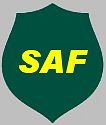
FOREST MANAGEMENT
GUIDELINES FOR MICHIGAN
By the Michigan Society of American Foresters
REGENERATION AND REFORESTATION
 The
renewal of forest cover may be by natural means or by seeding or planting. Properly
harvested aspen and hardwood stands regenerate themselves either by suckering,
stump sprouting, or seeding. Conifers typically regenerate from seed. Trees
may be planted on lands which have been in some non-forestry use, such as
The
renewal of forest cover may be by natural means or by seeding or planting. Properly
harvested aspen and hardwood stands regenerate themselves either by suckering,
stump sprouting, or seeding. Conifers typically regenerate from seed. Trees
may be planted on lands which have been in some non-forestry use, such as
farming, or to convert woodland from one tree species to another. Other kinds of plants may be cultivated along with, or in place of, trees in order to improve wildlife habitat, enhance visual aesthetics, or control erosion.
Harvesting Methods
Timber harvesting (logging) can be characterized on the basis of the manner in which wood is moved from the stump area to the woods landing or roadside. The three major types of harvesting methods used in Michigan are shortwood, tree length, and whole-tree methods. It is critical that the harvesting method be compatible with the silvicultural system and site conditions of a particular forest stand. Improper logging can seriously damage a stand, which will have long lasting effects and undo years of careful management. Where a portion of the existing stand is to be left, the tree-length and especially the full-tree methods should only be used with extreme care and close supervision. Appropriate skidding equipment for the job, operated by an experienced and conscientious crew, will minimize the amount of damage done to the soil and remaining trees.
It is equally important that the area to be logged be "set up" professionally with the harvesting method and equipment to be used in mind. Setting up a harvest usually consists of establishing the outside perimeter of the area to be harvested. Ribbons are hung or trees are spot painted to identify the boundary of the harvest area. Often the property boundary lines are used as part of the harvest boundary.
Trees which are designated for harvest under any partial stand removal are often identified for cutting by spot painting at DBH (diameter at breast height) and below stump height. In plantations undergoing the first harvest, individual rows of trees are often marked for removal. In subsequent harvests, trees within rows are marked as described for partial harvests. In this way, the logger knows which trees to cut and the landowner can check on the logger. Transportation of the harvested timber is usually another item to be considered as part of the sale "setup".
The shortwood harvesting method involves the conversion of trees into desired length products at the stump, either by hand with chain saws or by using a mechanized processor which fells, delimbs, and bucks the tree into sawlogs, pulpwood sticks, or other products. The individual pieces are then transported to the landing with a forwarder. The shortwood method is used mainly with partial stand removal, such as for thinning a stand and single-tree selection silviculture. It may also be used in clearcutting operations in some parts of the state. Under the uneven-aged silvicultural system where a high quality remaining stand is essential, the shortwood method may be preferred.
The tree-length harvesting method involves felling, delimbing, and topping trees in the woods and Trans-porting the tree lengths to the landing. The tree lengths are bucked into logs and/or sticks at the landing. In some instances, the tree lengths are hauled to a mill site for processing.
The whole-tree harvesting method involves transporting the entire felled tree to the landing for processing. Applications in Michigan include whole-tree chipping and those systems built around processors which delimb the whole tree and cut them into desired length products at the landing. One advantage of the whole-tree method is that it can utilize the tree's entire biomass, as is true for whole-tree chipping operations. Whole-tree harvesting presents the greatest potential for damage to the residual stand. The main advantage of the whole-tree harvesting operation is that it generally leaves the harvest site cleaner than any other harvesting method. A clean harvest site is important if the area is to be artificially regenerated (planted) and is aesthetically more acceptable. In operations where the limbs are not used, whole-tree harvesting concentrates slash at landings or in piles throughout the harvest area. Slash piles at landings could be disposed of by burning. Any unburned slash piles left at the landing or within the harvest area can provide short-term cover and food for certain species of wildlife.
The tree-length and whole-tree harvesting methods require larger landings than the short-wood method. In addition, the whole-tree chipping operation will generally require better access roads.
REGARDLESS
OF THE HARVESTING SYSTEM EMPLOYED, SEVERAL IMPORTANT POINTS ARE NOTEWORTHY
FOR SUCCESSFUL APPLICATION ON THE LANDSCAPE:
|

This website is maintained by Bill Cook, Michigan State University Extension
Forest in the Upper Peninsula. Comments, questions,
and suggestions are gratefully accepted.
Last update of this page was 8 May, 2008
This site is hosted by School of Forest Resources and Environmental Science at Michigan Technological University.